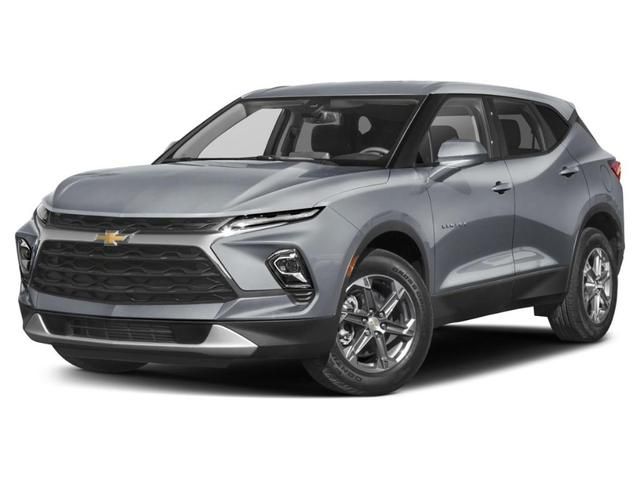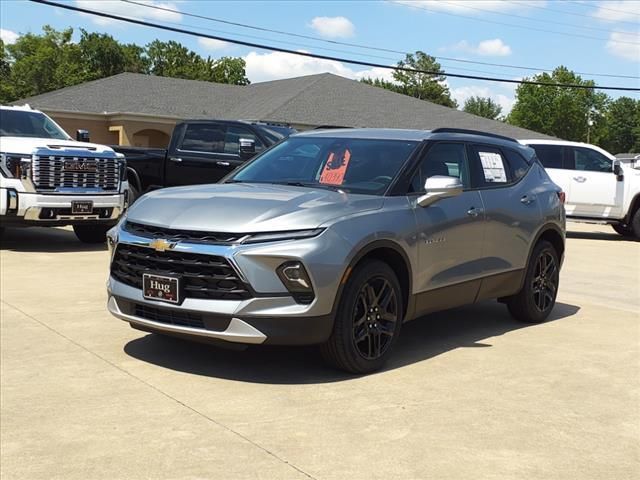
2019 CHEVROLET BLAZERVIN: 3GNKBKRS8KS647798
Historical Records
Maintenance inspection completed
Damage to right rear
Damage to rear
Sale Record
| Year | 2019 |
| ODO | — |
| Seller | Hidden text (Hidden text) |
| MSRP | $6964 |
| Location | Chicago, IL, 60636 |
| Date | appeared 4 years ago latest price $1767 sale post disappeared 2020-11-16 |
| Price History | |
| Sale Website Type | classifieds |
| Notes | |
| Hidden text | |



| Body Style | SUV |
| Color | Summit White |
| Color (Interior) | Jet Black |
| Transmission | Automatic |
| Engine | Gas V6 3.6L/ |
| Drive | AWD |
| Fuel Type | Gasoline |
- Hidden text
- (Ueu) Forward Collision Alert
- 2248
- 9-SPEED AUTOMATIC
- Hidden text
- DRIVER CONFIDENCE II PACKAGE includes (K4C) Wireless Charging
- Hidden text
- Headlamps
- Hidden text
- Safety Alert Seat
- Hidden text
- (UHX) Lane Keep Assist with Lane Departure Warning
- 8901
- AM/FM Stereo
- Hidden text
- Engine
- Hidden text
- JET B
- Hidden text
- SIDI
- Hidden text
- (R0Y) 21" Pearl Nickel aluminum wheels and (R0V) 21" all-season blackwall tires.)
- Hidden text
- Sunroof
- Hidden text
- cloud connected personalization for select infotainment and vehicle settings. Subscription required for enhanced and connected services after trial period. (STD)
- Hidden text
- (UGN) Forward Automatic Braking
- Hidden text
- (UKJ) front pedestrian braking
- 8195
- 270 lb-ft of torque [365 N-m] @ 5000 rpm) (STD)
- Hidden text
- 3.6L V6
- Hidden text
- Adaptive Cruise Control - Advanced
- Hidden text
- Forward Automatic Braking
- Hidden text
- HD Surround Vision
- Hidden text
- LICENSE PLATE FRONT MOUNTING PACKAGE (will be forced on orders with ship-to states that require a front license plate)
- Hidden text
- Rear Camera Mirror
- Hidden text
- SUN AND WHEELS PACKAGE (Includes (C3U) Panoramic power sunroof
- Hidden text
- Wheels
- Hidden text
- Front Pedestrian Braking
- Hidden text
- Premier Preferred Equipment Group Includes Standard Equipment
- Hidden text
- P265/45R21 ALL-SEASON BLACKWALL
- Hidden text
- Summit White
- Hidden text
- Transmission
- Hidden text
- enhanced voice recognition
- Hidden text
- Bose Premium 8-Speaker Audio System Feature
- Hidden text
- Dual front side impact airbags
- Hidden text
- Front Anti-Roll Bar
- Hidden text
- ABS Brakes
- Hidden text
- Brake Assist
- Hidden text
- Electronic stability control
- Hidden text
- Front Dual Zone A/C
- Hidden text
- Knee Airbag
- Hidden text
- Overhead console
- Hidden text
- R
- Hidden text
- Blind Spot Sensor: Lane Change Alert With Side Blind Zone Alert Warning
- Hidden text
- Dual Front Impact Airbags
- Hidden text
- Front Pedestrian Braking
- Hidden text
- Illuminated entry
- Hidden text
- Auto-Dimming Door Mirrors
- Hidden text
- Driver Door Bin
- Hidden text
- Four Wheel Independent Suspension
- Hidden text
- Heated Steering Wheel
- Hidden text
- Memory Settings For Driver Seat & Exterior Mirrors
- Hidden text
- Rear Window Defroster,6-Way Power Front Passenger Seat Adjuster
- Hidden text
- Sun & Wheels Package,8 Speakers
- Hidden text
- Outside temperature display
- Hidden text
- Power Liftgate
- Hidden text
- Preferred Equipment Group 0hd
- Hidden text
- Panic alarm
- Hidden text
- Rear Anti-Roll Bar
- Hidden text
- Security System
- Hidden text
- Rear Parking Sensors
- Hidden text
- Radio data system
- Hidden text
- Automatic Temperature Control
- Hidden text
- Steering Wheel Memory
- Hidden text
- Speed-Sensing Steering
- Hidden text
- Traction Control,4-Wheel Disc Brakes
- Hidden text
- Front & Rear Black Bowtie Emblems (LPO)
- Hidden text
- High-Intensity Discharge Headlights
- Hidden text
- Occupant Sensing Airbag
- Hidden text
- Power Steering
- Hidden text
- Ride & handling suspension
- Hidden text
- Turn Signal Indicator Mirrors
| Year | 2019 |
| ODO | 223 mi |
| Seller | Hidden text (Hidden text) |
| MSRP | $9106 |
| Location | Racine, WI, 53406 |
| Date | appeared 5 years ago latest price $7938 sale post disappeared 2022-08-26 |
| Sale Website Type | classifieds |
| Notes | |
| Hidden text | |
| Body Style | SUV |
| Color | Summit White |
| Color (Interior) | Jet Black |
| Transmission | 9-Speed Automatic |
| Engine | 3.6L V6 24V GDI DOHC |
| Drive | AWD |
| Fuel Type | Gasoline |
- 4-Wheel Disc Brakes
- Hidden text
- Driver Confidence II Package
- Hidden text
- Front & Rear Black Bowtie Emblems (LPO)
- Hidden text
- Heated Driver & Front Passenger Seats
- 2502
- Bose Premium 8-Speaker Audio System Feature
- Hidden text
- Following Distance Indicator
- Hidden text
- Front reading lights
- Hidden text
- Lane Keep Assist w/Lane Departure Warning
- Hidden text
- Panic alarm
- Hidden text
- ABS Brakes
- Hidden text
- Bumpers: Body-Color
- Hidden text
- Forward Collision Alert
- Hidden text
- HD Surround Vision
- Hidden text
- Low Tire Pressure Warning
- Hidden text
- Memory Settings For Driver Seat & Exterior Mirrors
- Hidden text
- Perforated Leather-Appointed Seat Trim
- Hidden text
- Rear seat center armrest
- Hidden text
- Wheels: 20 Medium Android Machined-Face Aluminum
- Hidden text
- Passenger Door Bin
- Hidden text
- Preferred Equipment Group 0hd
- Hidden text
- Rear Camera Mirror
- Hidden text
- Ride & handling suspension
- Hidden text
- Voltmeter
- Hidden text
- 3.49 Final Drive Ratio
- Hidden text
- Air Conditioning
- Hidden text
- Brake Assist
- Hidden text
- Driver Vanity Mirror
- Hidden text
- Forward Automatic Braking
- Hidden text
- Front Bucket Seats
- Hidden text
- Fully Automatic Headlights
- Hidden text
- Heated rear seats
- Hidden text
- Leather shift knob
- Hidden text
- Occupant Sensing Airbag
- Hidden text
- Panoramic Tilt-Sliding Power Sunroof
- Hidden text
- Power Driver Seat
- Hidden text
- Rear Anti-Roll Bar
- Hidden text
- Rear Window Defroster
- Hidden text
- Spoiler
- Hidden text
- Wheels: 21 Pearl Nickel Aluminum
- 4-wheel ABS Brakes
- Hidden text
- Digital Audio Input
- Hidden text
- Front ventilated disc brakes
- Hidden text
- 1st and 2nd row curtain head airbags
- Hidden text
- Compass
- Hidden text
- Dual reverse tilt mirrors
- Hidden text
- Leather seat upholstery
- Hidden text
- OnStar and Chevrolet connected services capable
- Hidden text
- Rear bench
- Hidden text
- Speed Sensitive Audio Volume Control
- Hidden text
- ABS And Driveline Traction Control
- Hidden text
- Braking Assist
- Hidden text
- Driver seat memory
- Hidden text
- Fuel Consumption: Highway: 25 mpg
- Hidden text
- Memorized Settings including steering wheel
- Hidden text
- Privacy glass: Deep
- Hidden text
- Side airbag
- Hidden text
- Turn signal in mirrors
- Hidden text
- Bucket Front Seats
- Hidden text
- Driver's side electrochromatic auto-dimming mirrors
- Hidden text
- Heated driver mirror
- Hidden text
- Metal-look door trim
- Hidden text
- Proximity remote trunk release
- Hidden text
- SiriusXM AM/FM/Satellite Radio
- Hidden text
- Video Monitor Location: Front
- Hidden text
- Navigation system with voice activation
- Hidden text
- Radio data system
- Hidden text
- SiriusXM Satellite Radio(TM)
- Hidden text
- Wheel Diameter: 20
- Hidden text
- Bluetooth Wireless Phone Connectivity
- Hidden text
- Driver knee airbags
- Hidden text
- Fuel Consumption: City: 18 mpg
- Hidden text
- Memorized Settings including door mirror(s)
- Hidden text
- Power Windows
- Hidden text
- Roof rails
- Hidden text
- Trip Computer
Model Analytics & Market Report
Depreciation
| Year | Average Mileage | Average Price | % Left | % Lost | ||
|---|---|---|---|---|---|---|
| 2019 MSRP | 0 mi | $39,115 | — | — | 100% | 0% |
| 2019 | 8,839 mi | $39,545 | −$430 | −1.1% | 101.1% | -1.1% |
| 2020 | 17,678 mi | $33,999 | +$5,546 | +14.02% | 86.92% | 13.08% |
| 2021 | 26,517 mi | $29,999 | +$4,000 | +11.77% | 76.69% | 23.31% |
| 2022 | 35,356 mi | $26,495 | +$3,504 | +11.68% | 67.74% | 32.26% |
| 2023 | 44,195 mi | $24,800 | +$1,695 | +6.4% | 63.4% | 36.6% |
| → Visit 2019 CHEVROLET BLAZER depreciation page to see full data. | ||||||
Price vs Mileage
| Mileage | Average Price | Sample Size |
|---|---|---|
| 5,000 mi | $33,998 | 13 sales |
| 10,000 mi | $29,995 | 97 sales |
| 15,000 mi | $31,787 | 159 sales |
| 20,000 mi | $30,200 | 207 sales |
| 25,000 mi | $29,393 | 322 sales |
| 30,000 mi | $29,180 | 414 sales |
| → Visit 2019 CHEVROLET BLAZER depreciation page to see full data. | ||
VIN Decoder — 57 records
Anti-lock Braking System (ABS) means a portion of a service brake system that automatically controls the degree of rotational wheel slip during braking by: (1) Sensing the rate of angular rotation of the wheels; (2) Transmitting signals regarding the rate of wheel angular rotation to one or more controlling devices that interpret those signals and generate responsive controlling output signals; and (3) Transmitting those controlling signals to one or more modulator devices that adjust brake actuating forces in response to those signals.
An auto-reverse system enables power windows and sunroofs on motor vehicles to automatically reverse direction when such power windows and panels detect an obstruction. This feature can prevent children and others from being trapped, injured, or killed by the power windows and sunroofs.
ESC is a computerized technology that improves a vehicle's stability by detecting and reducing loss of traction (skidding). When ESC detects loss of steering control, it automatically applies the brakes to help steer the vehicle in the driver's intended direction. Braking is automatically applied to wheels individually, such as the outer front wheel to counter oversteer, or the inner rear wheel to counter understeer. Some ESC systems also reduce engine power until control is regained.
A keyless ignition system permits starting a car without a physical key being inserted into an ignition. Instead, a small device known as a "key fob" transmits a code to a computer in the vehicle when the fob is within a certain close range. When the coded signal matches the code embedded in the vehicle's computer, a number of systems within the car are activated, including the starter system. This allows the car to be started by simply pressing a button on the dashboard while the key fob is left in a pocket or a purse. The vehicle is usually shut down by pushing the same button.
When the traction control computer detects a driven wheel or wheels spinning significantly faster than another, it invokes an electronic control unit to apply brake friction to wheels spinning due to loss of traction. This braking action on slipping wheels will cause power transfer to the wheels with traction due to the mechanical action within the differential.
A backup camera, also known as a rearview video system, helps prevent back-over crashes and protects our most vulnerable people - children and senior citizens - by providing an image of the area behind the vehicle. A backup camera helps the driver see behind the vehicle while in reverse.
A CIB system is an automatic emergency braking system designed to detect an impending forward crash with another vehicle. CIB systems automatically apply the brakes in a crash imminent situation to slow or stop the vehicle, avoiding the crash or reducing its severity, if the driver does not brake in response to a forward collision alert.
A DBS system is an automatic emergency braking system designed to detect an impending forward crash with another vehicle. DBS systems automatically supplement the driver's braking in an effort to avoid a crash if the driver does not brake hard enough to avoid it.
An FCW system monitors a vehicle's speed, the speed of the vehicle in front of it, and the distance between the vehicles. If the vehicles get too close due to the speed of either vehicle, the FCW system will warn the driver of the rear vehicle of an impending crash so that the driver can apply the brakes or take evasive action, such as steering, to prevent a potential crash. FCW systems provide an audible, visual, or haptic warning, or any combination thereof, to alert the driver of an FCW-equipped vehicle of a potential collision.
BSW alerts drivers with an audio or visual warning if there are vehicles in adjacent lanes that the driver may not see when making a lane change.
An LDW system monitors lane markings and alerts the driver if their vehicle drifts out of their lane without a turn signal or any control input indicating the lane departure is intentional. An audio, visual or other alert warns the driver of the unintentional lane shift so the driver can steer the vehicle back into its lane.
An LKA system prevents a driver from unintentionally drifting out of the intended travel lane. LKA systems use information provided by Lane Departure Warning (LDW) system sensors to determine whether a vehicle is about to unintentionally move out of its lane of travel. If so, LKA activates and corrects the steering, brakes or accelerates one or more wheels, or does both, resulting in the vehicle returning to its intended lane of travel.
ADB is a type of front-lighting system that lets upper beam headlamps adapt their beam patterns to create shaded areas around oncoming and preceding vehicles to improve long-range visibility for the driver without causing discomfort, distraction, or glare to other road users.
DRL is an automotive lighting system on the front of a vehicle or bicycle, that automatically switches on when the vehicle is in drive, and emits white, yellow, or amber light to increase the conspicuity of the vehicle during daylight conditions.
A semi-automatic headlamp beam switching device provides automatic or manual control of beam switching at the option of the driver. When the control is automatic, the headlamps switch from the upper beam to the lower beam when illuminated by the headlamps on an approaching car and switch back to the upper beam when the road ahead is dark. When the control is manual, the driver may obtain either beam manually regardless of the condition of lights ahead of the vehicle.
Engine displacement (in cubic centimeters) is the volume swept by all the pistons inside the cylinders of a reciprocating engine in a single movement from top dead center to bottom dead center.
Engine displacement (in cubic inches) is the volume swept by all the pistons inside the cylinders of a reciprocating engine in a single movement from top dead center to bottom dead center.
Engine displacement (in liters) is the volume swept by all the pistons inside the cylinders of a reciprocating engine in a single movement from top dead center to bottom dead center.
Engine configuration defines how engine cylinders are arranged. Common values are V6 for V-shaped arrangement, I4 or L4 for in-line arrangement.
This is a numerical field to store the number of cylinders in an engine. Common values for passenger cars are 4 or 6.
Fuel type defines the fuel used to power the vehicle. For vehicles that have two power sources, such as plug-in hybrid vehicle, both primary fuel type and secondary fuel type will be provided.
Body Class presents the body type based on 49 CFR 565.12(b): "Body type means the general configuration or shape of a vehicle distinguished by such characteristics as the number of doors or windows, cargo-carrying features and the roofline (e.g., sedan, fastback, hatchback)." Definitions are not provided for individual body types in the regulation.
Gross vehicle weight rating (GVWR) is the maximum operating weight of a vehicle including the vehicle's chassis, body, engine, engine fluids, fuel, accessories, driver, passengers and cargo, but excluding that of the trailers. Per 49 CFR 565.15, Class 1 is further broken down to Class A-D; Class 2 is further broken down to Class E-H. This field captures the lower bound of GVWR range for the vehicle.
Base price of the vehicle is the cost of a new vehicle with only the standard equipment and factory warranty. It is the cost without any optional packages.
Per 49 CFR 565, Model means a name that a manufacturer applies to a family of vehicles of the same type, make, line, series and body type.
If the model year (MY) is supplied when the VIN is decoded, such as from a crash report or a vehicle registration record, the MY value will be the supplied MY, even if the MY decoded from the VIN differs from the supplied MY. If the MY is not supplied when the VIN is decoded, the MY value will be decoded from the 10th character in the VIN.
This data element captures the city of the manufacturing plant where the manufacturer affixes the VIN.
This data element captures the country of the manufacturing plant where the manufacturer affixes the VIN.
This field captures the location of curtain air bags. Curtain air bags are side air bags that protect the head.
This field captures the location of frontal air bags. Frontal air bags are generally designed to deploy in "moderate to severe" frontal or near-frontal crashes.




































